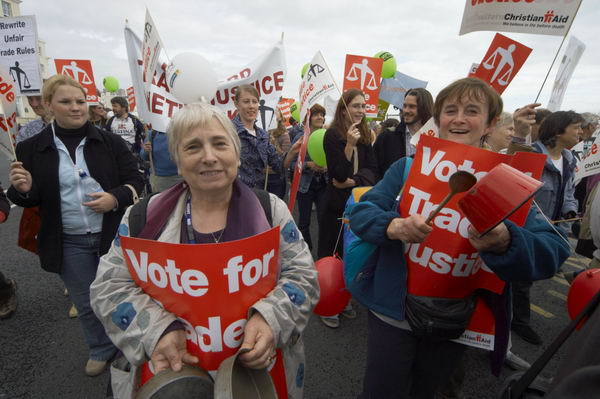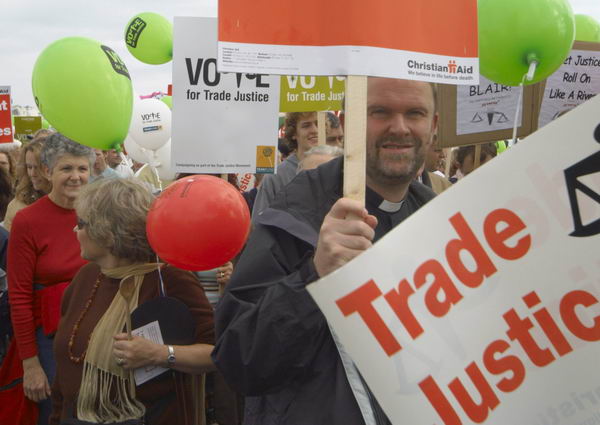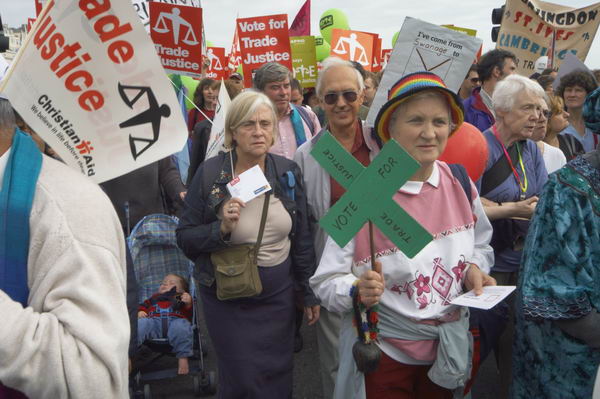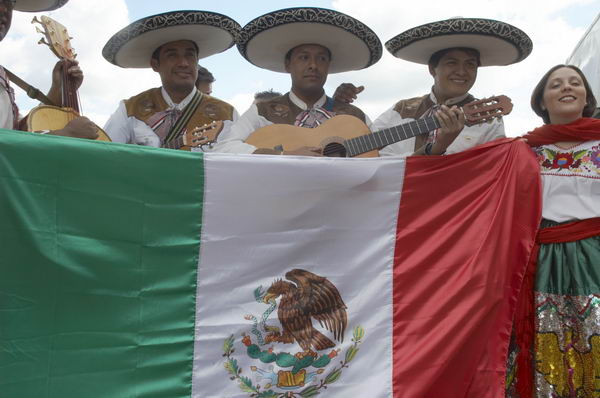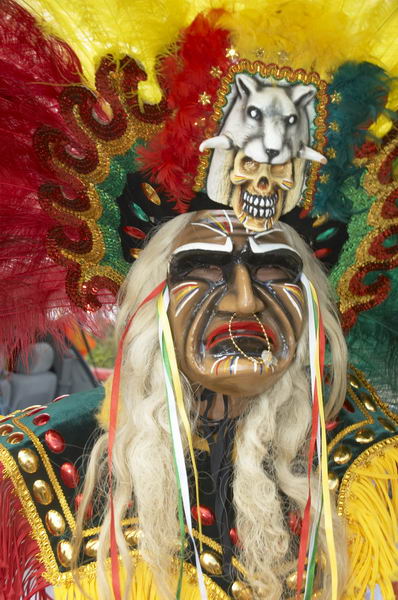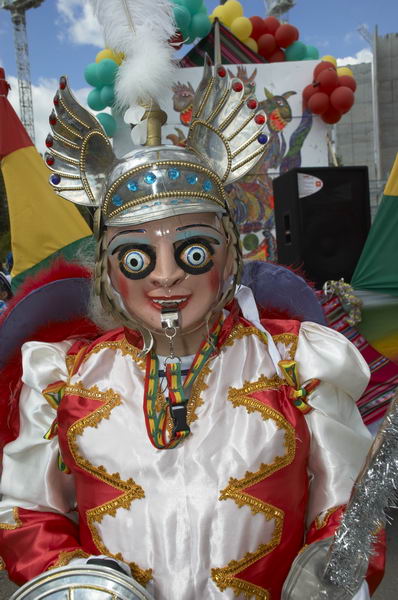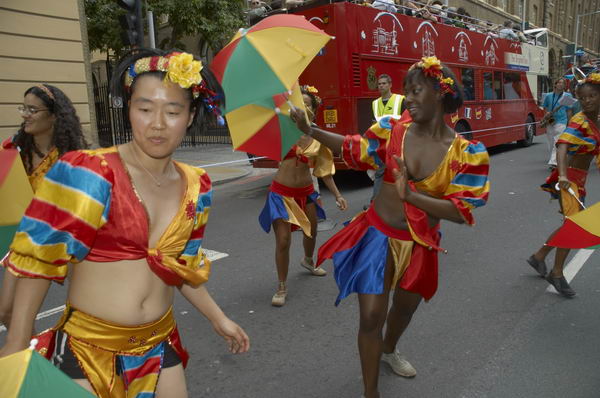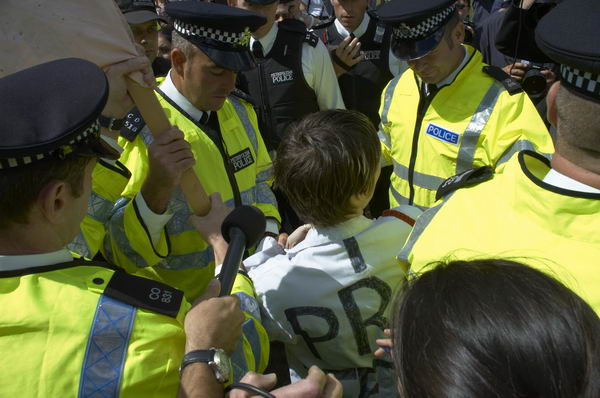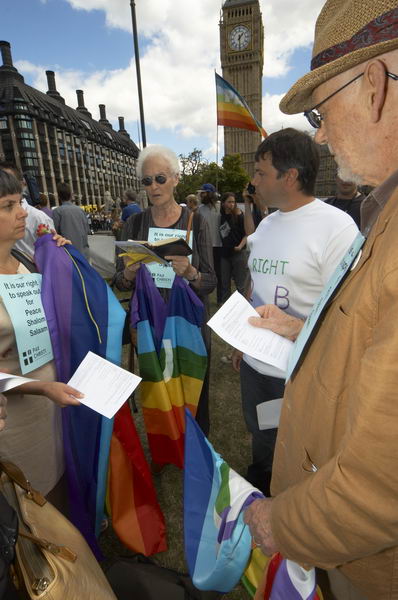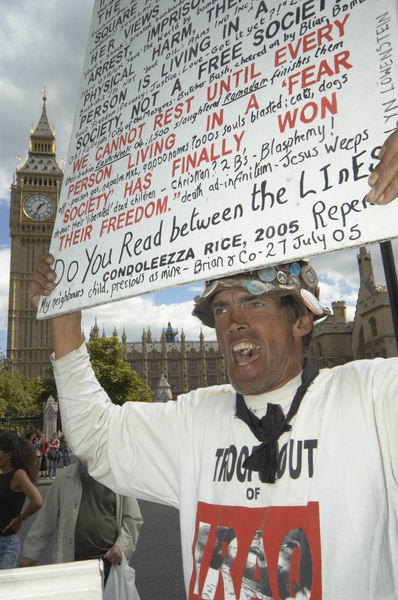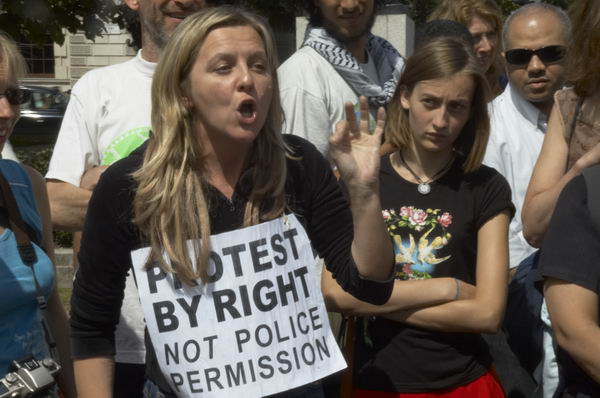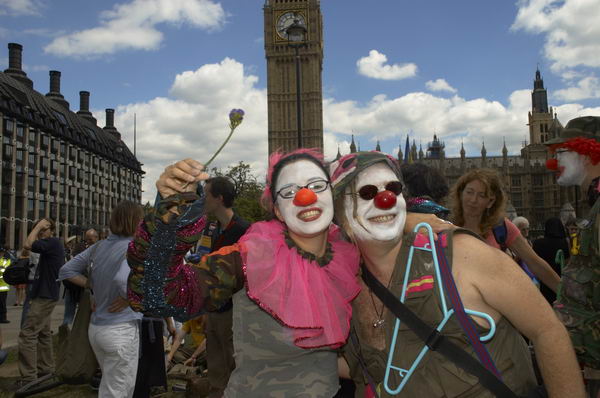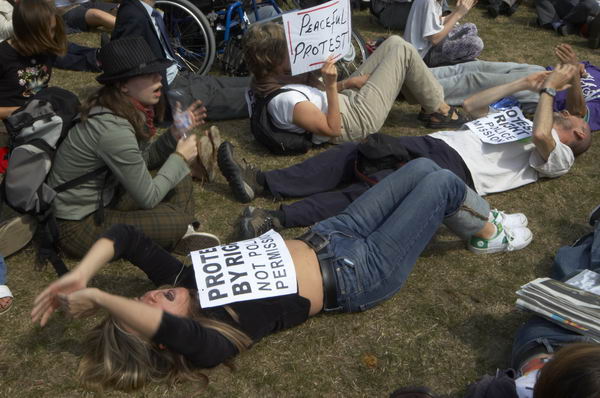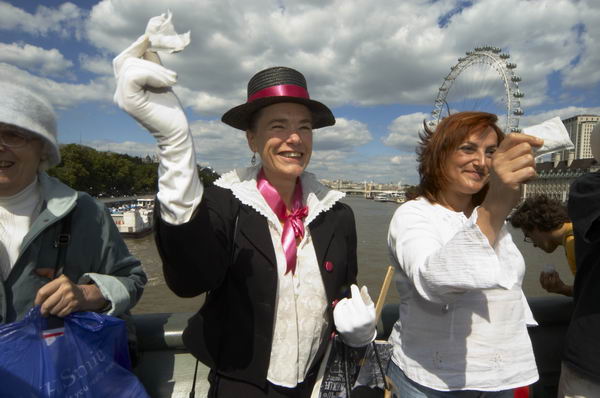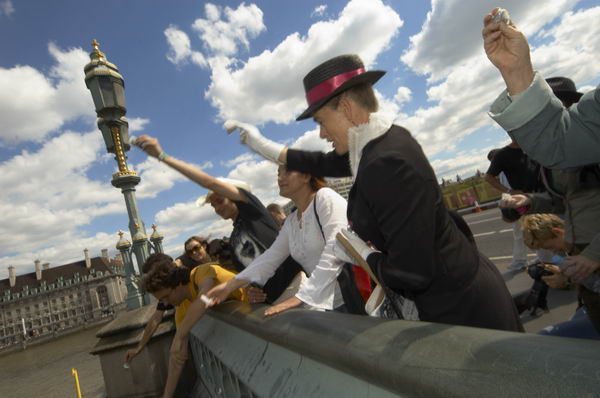Trade Justice Not Free Trade Overnight Vigil – 2005: Twenty years ago on the night of 15th April 2005 and the following morning I was one of around 25,000 people protesting in Westminster for Trade Justice rather than Free Trade. The week of action was a part of the Make Poverty History campaign and it was a long cold night for me.
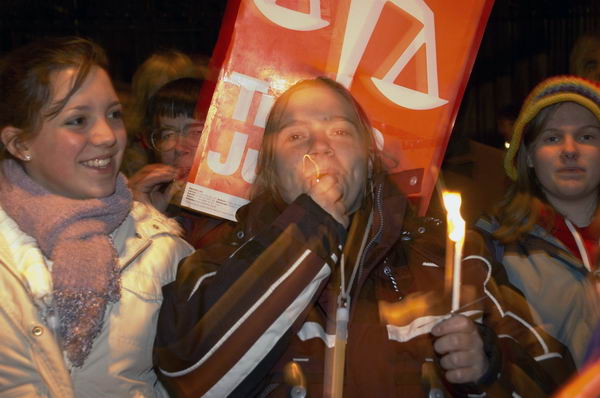
Trump has put world trade very much into the headlines in recent weeks with his assault on free trade, raising tariffs to silly levels and creating chaos in international trading systems that were largely set up to favour the United States and to a lesser extent the industrial west through organisations including the World Trade Organization (WTO), the International Monetary Fund (IMF) and the World Bank (WB) at the cost of the poorer countries of the world.
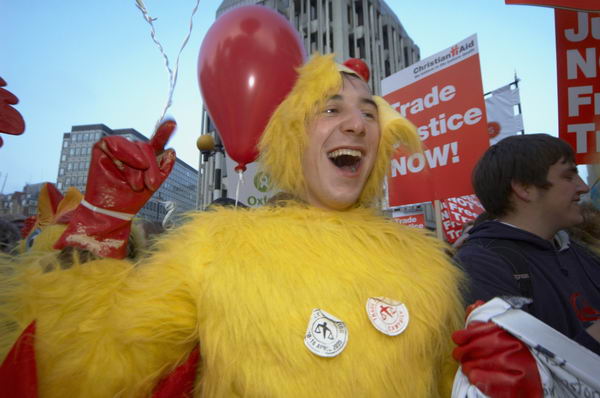
The Trade Justice Movement calls for policies “designed to deliver a sustainable economic system that tackles poverty and protects the environment.” It calls on the UK Government to:
“Ensure trade rules allow governments, particularly in poor countries, to choose the best solutions to end poverty and protect the environment;
Prevent trade rules that allow big businesses to profit at the expense of people and the environment;
Ensure decisions about trade rules are made transparently and democratically.”
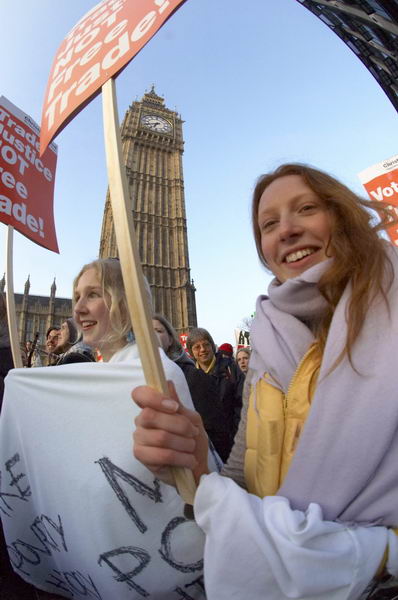
Free Trade which simply relies on market forces ignores human rights, environmental considerations and democratic decision-making and leads to exploitation, environmental degradation and inequality – we need a more just system.
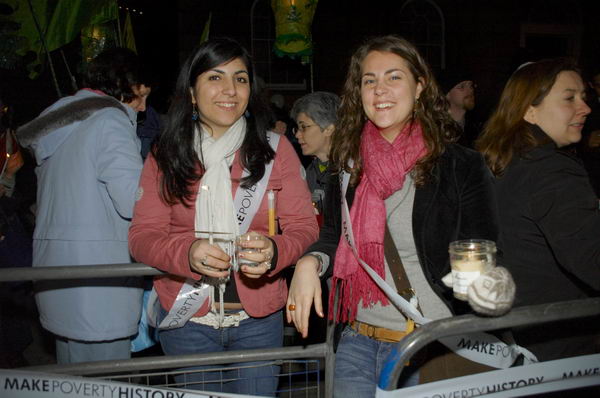
Here with some of the pictures (and the usual minor corrections) is what I wrote about the overnight vigil in which a surprisingly large number of people – probably around 25,000 took part, overwhelming the expectations of the organisers.
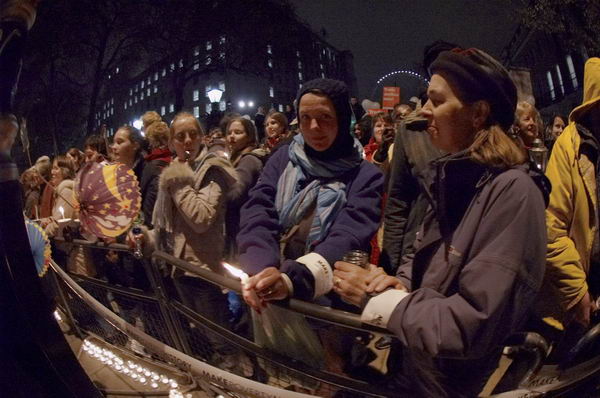
Wake Up to Trade Justice – Westminster
15-16 April, 2005

The UK climax of the global Week of Action on Trade Justice was an overnight vigil in Westminster on Friday-Saturday 15-16th April. Along with many thousands of others I travelled to the opening event at Westminster Abbey, only to find it was already full. Fortunately we were able to hear the relay sitting in the seats marked ‘Members of Parliament’ in St Margaret’s Church next to the abbey, but there were many more people in Parliament Square and around the area.

At 11pm we moved off into whitehall, where it soon became obvious there were far too many to fit behind the crush barriers and we took over the road, leaving just a single lane for northbound traffic. People lit their candles and made a fair bit of noise, before leaving either for home or to try to attend one of the various events that had been organised through the night. I went to the Vue cinema in Leicester Square to see a preview of ‘The Fever’ starring Vanessa Redgrave (she had talked earlier in Westminster Abbey.)

When that finished I’d hoped to do something else, but all the venues were full, with long queues, so I went for a walk by the Thames. The organisers had expected a couple of thousand people, hoped and planned for five thousand but altogether estimate that some twentyfive thousand turned up for all or part of the event.

From 4am to 4.30am we crushed into Whitehall again for a mass vigil opposite Downing St. Millions of people around the world suffer from unjust trade, and this was chosen as the time when the largest number of them are awake. I was rather less so, but still managed to blow my whistle and take a few pictures, though I messed things up rather more than usual.

I’d dressed up in warm clothes (the forecast had told me 4 degrees at 6 am), but even so, sitting on a bench in Parliament Square after this was a mistake. I fell asleep and was woken up shivering at around half-past five by a smell of burning. Someone sleeping on the ground nearby had set some of their clothing on fire with their candle. Fortunately it was quickly extinguished, with a bottle of Lucozade serving as a fire extinguisher.

Soon after the dawn procession began to assemble and I managed to drag myself up to photograph it.

People were remarkably wide-awake and cheerful as the ten thousand or so who had stayed the night over made a short walk through Westminster as the sun rose over the buildings. By half past seven it was all over, and I walked back to Waterloo Station taking a few more pictures in the morning light.
Many more pictures on My London Diary.
Flickr – Facebook – My London Diary – Hull Photos – Lea Valley – Paris
London’s Industrial Heritage – London Photos
All photographs on this page are copyright © Peter Marshall.
Contact me to buy prints or licence to reproduce.

